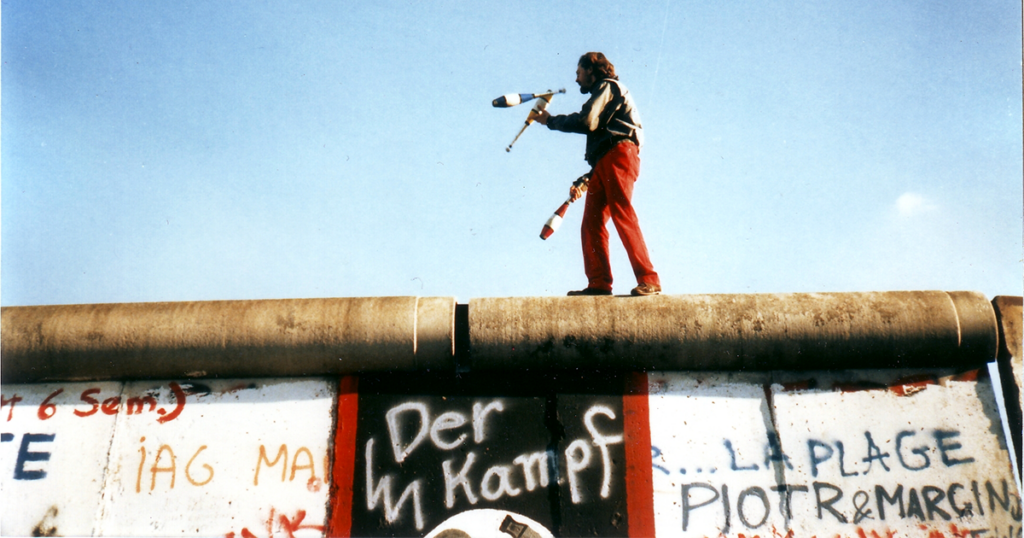
Goodbye, Eastern Europe: An Intimate History of a Divided Land by Jacob Mikanowski; Pantheon Books, 400 pp., $30
The opening sentence of Jacob Mikanowski’s sweeping history of Eastern Europe—“a place,” he asserts, “that doesn’t exist”—calls to mind a seminal 1983 essay by the recently deceased Czech-French novelist, Milan Kundera. In A Kidnapped West: A Tragedy of Central Europe, Kundera reminded his readers that Poland, Hungary, and Czechoslovakia were historically and culturally closer to the West than to the Soviet East, and should therefore be thought of as central rather than eastern European. Alas, his appeal fell on deaf ears, and the region remains “eastern,” shorthand for a place where, rumor has it, nobody smiles and the smell of burned cabbage wafts through the corridors of charmless, concrete apartment blocks. Indeed, western prejudice was never more in evidence than during the early days of Russia’s invasion of Ukraine, when many commentators painted the war as just another incomprehensible scuffle in the other Europe, among the denizens of lands once obscured by the Iron Curtain.
With his new book, Mikanowski, an independent journalist and critic based in Portland, Oregon, calls our attention to the myriad peoples who, over the centuries, have claimed those lands as their own. He devotes entire chapters to pagans, Christians, Jews, Muslims, heretics, wanderers, and prophets—an unlikely assemblage of peoples that shares the culturally and politically dubious label of “Eastern European.” Indeed, Eastern Europe is “a phantasm of a phantasm,” Mikanowski writes, a weird and tantalizing place. And there, he goes on, “the Dark Ages were truly dark … almost impenetrably so.” The region is largely absent from the historical record until the arrival in the ninth and 10th centuries of Christian missionaries from Moravia and Constantinople, who practiced a form of colonization that was later replicated in the New World—not merely proselytizing, but massacring local chiefs and their followers until the survivors could be baptized and turned into serfs. (The Lithuanians managed to hold out against the Teutonic Knights until the 14th century, at which point they formed a powerful alliance with the Poles, which further guaranteed their independence). Today, in the harsh light of the Holocaust, it’s hard to believe that Poland was once thought of as the Paradisus Judaeorum, the “Paradise of the Jews.” But such it was, writes Mikanowski, despite all of the religious fissures that ran through the region. Indeed, by 1600, Poland was “largely free from religious persecution and abounding in trade.”
Scholars continue to debate where Slavs originated, but the prevailing theory suggests that they hail from what is now Romania—“rather paradoxically,” as Mikanowski rightly notes, “since there are no Slavic-speakers there today (Romanian is a Romance language).” This in itself is indicative of the larger reality: Eastern Europe is a land of contradiction. For instance, the region’s plurality of religions, languages, and ethnicities makes it an avatar of coexistence, but it has also been “a powder keg, a nest of assassins, a tangle of murderous animosities.” For this, Mikanowski blames nationalism. The Habsburgs had long given their subjects a measure of autonomy, but that did not stop various ethnic groups like the Serbs and the Czechs from agitating for independence from their imperial overlords after the advent of the Austro-Hungarian Empire in 1867. The nations of western Europe were molded by erasing dissimilarities, which made their populations more homogenous. But in the East, the empires of the Habsburgs and the Romanovs “taxed and counted their subjects, but they did not intervene too deeply in the inner structure of their communities.” Their hands-off approach made their populations more autonomous and diverse, but also more restless and rebellious.
Poland, Hungary, and Serbia have long indulged the self-aggrandizing myth that they stand as the “bulwark of Christendom.” Just consider their shameful mistreatment of Middle Eastern migrants at their borders. But as Mikanowski writes, “Eastern Europe was never just a rampart: it was also a gate. If Muslims and Christians fought there, they also met, mingled, and rubbed off on each other.” The region, he continues, is “not so much the edge of Europe as an Islamic periphery, one of the many fringes of a Muslim belt that stretches from West Africa all the way to Southeast Asia.” Whether Eastern Europeans like to admit it or not, there is no denying that they need immigrants from other parts of the world, if only because their own native-born populations are in decline.
Assuming we bid farewell to Eastern Europe as a concept, what should we replace it with? Central Europe works, but for some it also harkens to a bygone era of Mitteleuropa, with all of its pan-German and Nazi baggage. Mikanowski posits that most Eastern Europeans “possess a surplus of history, but a deficit of useful narrative. That is, plenty of things have happened to them, but not enough has been done by them to establish a deeply rooted sense of shared destiny.” This may be true, but it’s also why populist politicians in, say, Poland and Hungary invest so much political currency in emphasizing their anticommunist credentials, which carries that additional benefit of making them seem tough and ready to take on the technocrats in Brussels. Alas, despite the region’s accession into Western power structures, like NATO and the European Union, the catch-all term “Eastern Europe” will remain very much in use for the foreseeable future.

